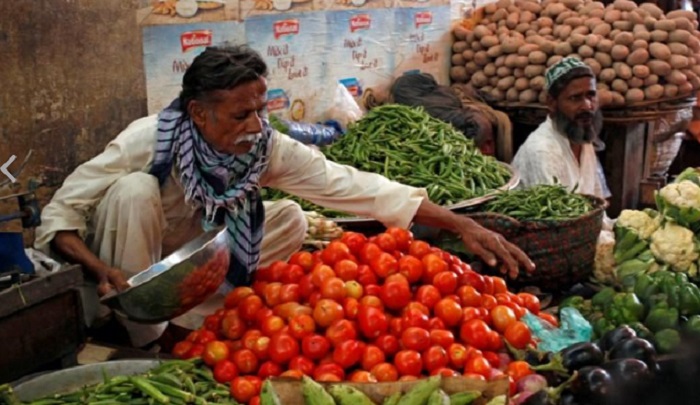
Fired by the Pakistan government’s missteps and administrative measures, inflation jumped to a 59-year highest level of 36.4% in April, squeezing the people’s purchasing power amid almost flat economic growth.
A year ago when the Pakistan Tehreek-e-Insaf government tenure ended, the annual inflation rate was 13.4%, which skyrocketed within a year.
This underscores the economic mismanagement of the government of Prime Minister Shehbaz Sharif.
The Pakistan Bureau of Statistics (PBS) -the national data collecting agency -on Tuesday reported that the Consumer Price Index rose to 36.4% – a figure that may be accurate but still does not truly represent the harsh ground realities.
Except Iran where inflation was 53%, there was no parallel in whole of Asia to Pakistan, suggesting that the inflationary wave was more because of domestic conditions than global economic factors.
It was the highest pace of inflation since 1964 that edged closer to the record ever inflation rate of 37.8%. The inflation reading was in line with the expectations of the Ministry of Finance of 36% to 38% in April.
Amid spiraling inflation and virtually no economic growth, the government appears to be a silent spectator and is spending most of its energies in fighting out a political battle for survival. An internal document of the Ministry of Finance showed that the economic growth rate may remain around 0.8% in this fiscal year with agriculture and industrial sectors treading towards negative growth.
The inflation rate remained elevated in rural areas where it was recorded at 40.7% – already crossing the historical barrier of 37.8%.
The majority of Pakistani population still lives in rural areas.
The inflation rate jumped to 33.5% in the cities, according to the PBS.
It reported that the food inflation skyrocketed to 52.2% in rural areas, thanks to the government’s wrong decision of increasing the wheat support price by 77% in one go.
The PML-N led coalition government also allowed export of sugar, which contributed to a 42% increase in its prices in the domestic market.
There were seven consumer price groups that saw the inflation rate over 40% including alcoholic beverages and tobacco that surged to 134% due to the government’s decision to increase taxes on tobacco and beverages. Yet the Federal Board of Revenue has sustained massive revenue shortfall of Rs400 billion in just 10 months of this fiscal year.
The currency devaluation, mostly caused by the government’s failure to strike a deal with the International Monetary Fund, increase in prices of gas, electricity and a mini-budget have contributed to the 59-year highest inflation rate in Pakistan.
There was hardly any consumable good that had not seen its price shot up in recent months.
Last week, the Ministry of Finance admitted that the central bank’s monetary policy was not helping to contain the inflation. The State Bank of Pakistan set the key policy rate at 21%, which instead of stemming inflation contributed in its fuelling due to high borrowing requirements of the federal government.
The factors that are contributing to the hike in inflation cannot be addressed by merely increasing the interest rates.
The core inflation, which was calculated after excluding the volatile energy and food prices, increased in April to 19.5% in urban areas and 24.9% in rural areas -much above the central bank’s interest rate.
For the next fiscal year, the Ministry of Finance has projected average 20% inflation rate.
Despite constantly increasing the interest rates, the core inflation has not receded that should be a matter of concern for the monetary policy committee members.
There was a huge increase in the food inflation rate, mostly because of disruption of supply chains and weak checks.
The food inflation rose steeply to 52.2% in rural areas and 46.8% in cities last month, the PBS data showed.
The wheat flour -the staple food of every household- saw prices soaring 107% while the wheat became expensive by 103% in April compared to a year ago.
The inflation rate for the transport consumer price group was 56%, recreation and culture 69%, beverages and tobacco groups 134%, and for perishable food group, it was 27%. The inflation rate for the non-perishable food products surged 49% last month.
The prices of pulses jumped up by 58% and milk prices increased 40%.
The non-food inflation rate increased to 25% in cities and 30% in rural areas. The electricity prices in April were higher by 31% and that of gas 63% compared to a year ago.
The petrol was expensive by 76% compared to a year ago.
The cost of text books increased by 106% to 126% across the country and the stationary became too expensive by 84%.
For the July-April period of the current fiscal year, the data showed that the average inflation rate stood at 28.3%, which was more than double the official target of 11.5% for the current fiscal year set before the floods. (Express Trubune)
